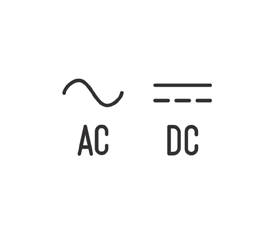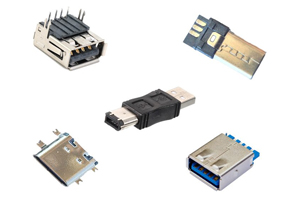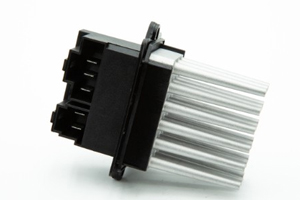DC Voltage Explained: What It Is and Its Importance in Electronics
Author:admin Date: 2025-06-17 08:19 Views:528
Introduction
You will come across alternating current (AC) and direct current (DC) in electrical systems. Depending on the device, you may be limited to only using AC or DC. However, some models can use both depending on the design. These two types of current operate differently and will have different applications based on the device. Today, we want to focus more on the DC voltage to learn about it and see how best to use it in many applications.

What is DC Voltage?

Direct Current (DC) voltage is a type of current in which the flow is in a single direction, and the voltage remains constant over time. It is a fundamental concept in electronics and electricity, and it is distinct from alternating current (AC), which periodically reverses its direction.
Before we even look at AC vs. DC voltage, it is worth looking into the properties of the DC voltage first. The unidirectional flow of the current makes it unique, and so are the applications. These are devices with circuits that can only work with the DC voltage.
Since DC voltage does not reverse polarity and magnitude like AC voltage, it remains constant over time.
Sources of DC Voltage
The sources might not have a sign for DC voltage, but they are worth mentioning. Typical examples include:
- Batteries are a common example. This is where chemical reactions are used to generate the DC voltage. They are commonly used in portable electronic devices, vehicles, and more.
- Solar cells convert light energy into DC electricity. They are important for generating enough power for homes, businesses, and other types of applications.
- You can also get DC power supplies, which are devices used to convert AC voltage into DC voltage. This is then used in other electronics that need a steady DC voltage source.
- Fuel cells can also be categorized as options for DC voltage. This is where they can convert the chemical energy from a fuel to get electrical energy. The DC voltage is usually the byproduct.
- DC generators are also an option. They might not be as common as batteries and solar cells, but they are an option nonetheless.
Applications of DC Voltage
You do not always need a DC voltage converter to power your devices. Here are examples of where you can use the DC voltage.
The biggest use of DC voltage is powering electronic devices, such as mobile phones, laptops, and many other portable devices.
The same is true of automotive systems. The car battery starts the vehicle and powers the onboard electronics. Electric vehicles now use DC power for their propulsion systems and other devices onboard.
Renewable energy systems such as solar panels are useful in generating the DC voltage, which is then used to work with various devices. That is why we have seen data centers and related applications using solar cells as backups for running their operations.
How To Check DC Voltage With A Multimeter
It is possible to measure the DC voltage with a multimeter. The process is simple, and you can do it in just a few steps. Here is how you would do it.
1. Gather the tools
You should consider getting the right tools for this process. First, you need a multimeter, which can be digital or analog. Next, you need the test probes, which should come with the multimeter.
2. Prepare the multimeter
Regarding preparation, you simply need to turn the dial to choose the right mode for measuring the DC voltage. This is important as there is a difference between AC and DC voltage measurements.
Turn the dial to select the DC voltage setting. It will have the symbol V with a straight and dashed line. Also, make sure you are choosing the right range for the DC voltage. It is a high voltage; you can choose the highest setting and adjust downwards depending on how much DC voltage is measured.
Insert the probes into their respective jacks. The black probe goes into the COM (common) jack, while the red probe goes into the V (voltage) jack.
3. Connecting to the circuit
Start by identifying the polarity of the terminals before connecting the probes. Touch the red probe to the positive terminal while the black probe to the negative terminal. You can now read the values on the multimeter to know how much DC voltage is going through the circuit.
How to Control DC Voltage
Sometimes, it might be necessary for you to control the DC voltage. You can do this in several ways, including using a DC voltage regulator and other methods. Below are some of them.
Voltage Regulators
Voltage regulators help maintain a constant output voltage despite variations in the input voltage or load current. Components such as Zener diodes and similar devices can do this.
DC-DC Converters
These are circuits with switching techniques to change the DC voltage levels. Examples include buck converters that step down voltage while boost converters help step it up.
Potentiometers and Resistors
You can also find potentiometers and resistors that can be used to adjust the amount of DC voltage going through a circuit. These are for simpler applications.
Pros and Cons of DC Voltage
Pros
- It offers simpler motor control
- Has lower transmission losses over short distances
- Compatible with many electronics
- Works well with many storage devices, such as batteries
Cons
- It might be difficult to achieve voltage transformation
- It has limitations for long-distance transmission
- High risks of electric shock in some cases
How To Convert DC Voltage To AC Voltage
If you want to convert DC to AC voltage, get an inverter. The inverter takes the DC input and converts it into an AC output.
Inverters are crucial in many circuits as they help us get the AC voltage essential for running many devices in our homes.
DC Voltage Safety Tips
The DC voltage appliances need the same attention as their AC counterparts. It is the same thing while working with the DC voltage directly. There is a need to use the right personal protective equipment, such as insulated gloves, boots, and others, to minimize the chances of shock. Other safety tips include:
- De-energize the circuits before you start working on the electrical equipment. Make sure to disconnect the power source first.
- Before working on it, you can also use a multimeter to test if power is still connected to the circuit.
- Of course, ensure the circuit is grounded to minimize the electrocution risks.
- Double-check the polarity of the DC input to avoid mixing up the connections, which can damage the equipment, especially in cases of high voltage.
Conclusion
DC voltage is characterized as being unidirectional, unlike AC voltage, which can periodically change direction over time. This type of characteristic makes the DC voltage suitable for certain devices. This includes powering phones, laptops, EVs, and other portable devices. A device will be clearly indicated if it uses DC or AC voltage. This helps you choose correctly depending on the supply available. You can always use an inverter to get the AC output if necessary.
Please send RFQ , we will respond immediately.
Frequently Asked Questions
Can you connect AC voltage to DC voltage?
Yes, it is possible, but you must use rectifiers or AC-DC converters. These converters work by converting the AC into DC voltage for compatibility. If they are connected to an AC outlet, you can expect to find many electronic devices that use these converters to power internal DC circuits.
Is DC Voltage more dangerous than AC voltage?
Both are dangerous, especially when working with high voltages. DC voltage can still be dangerous when you get electrocuted. You should always wear property safety gear and take the recommended precautions.
Why is DC voltage preferred in electronic circuits?
This is because DC voltage offers stable and predictable current flow. This is important for digital components such as memory chips, sensors, and microprocessors. Expect most modern electronics to rely on such current for their operations.


